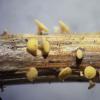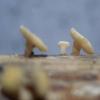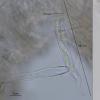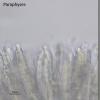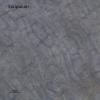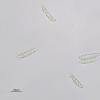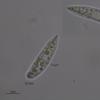
28-12-2025 12:08
Margot en Geert VullingsThis possible Karstenia was found on the bark of d

21-12-2025 21:32
Pol DebaenstHello, Garden, Burgweg 19, Veurne, BelgiumOn 10/1

26-12-2025 21:19
Arnold BüschlenPithyella chalaudii Priou. Ist als Bryoparasit in

21-12-2025 09:32
Hello.A tiny ascomycete found embedded in wood in

18-12-2025 21:17
Pol DebaenstThe identification took me to Byssonectria deformi

24-12-2025 17:08
Hulda Caroline HolteHello, I have found this propoloid ascomycete on
Hymenoscyphus
William de Jong,
21-11-2021 10:36
I would like some help in identifying this Hymenoscyphus.
Found it (yesterday) on a half-dead flowering stem of Symphyotrichum (The Netherlands). Apothecia max. 1.5 mm diameter, not reddening. I found croziers I think. Spores with quite some oil content: 20,8-22,6 x 4,7-5,1; no cilia observed.
For other details, see pictures.
Does anyone recognize this Hymenoscyphus?
Thanks in advance.
Best regards,
William
Hans-Otto Baral,
21-11-2021 11:32

Re : Hymenoscyphus
Looks like croziers indeed. What is not clear is the paraphysis content (in vivo). Strongly refractive multiguttulate?
Symphyotrichum is a genus with England-Aster etc. Is the stem herbaceous or woody?
H. virgultorum has similar spores but lacks croziers and grows on woody substrates.
H. fucatus has larger spores with larger LBs.
So I have no idea.
William de Jong,
21-11-2021 13:05
Re : Hymenoscyphus
Thank you very much for your answer Zotto!
It's indeed something like England-Aster - Aster novae-angliae, or a close relative. The lower part of the stem where the Hymenoscypes was growing is definitely more woody than herbaceous. The content of the paraphysis (in vivo) is not strongly refractive multiguttulate.
(In the attached picture in my first post I accidently posted a close-up of one of the paraphysis in Lugol, my apologies.)
Okay, Hymenoscypus sp. it remains. Thanks again for your help.
Best regards, William
It's indeed something like England-Aster - Aster novae-angliae, or a close relative. The lower part of the stem where the Hymenoscypes was growing is definitely more woody than herbaceous. The content of the paraphysis (in vivo) is not strongly refractive multiguttulate.
(In the attached picture in my first post I accidently posted a close-up of one of the paraphysis in Lugol, my apologies.)
Okay, Hymenoscypus sp. it remains. Thanks again for your help.
Best regards, William
Hans-Otto Baral,
21-11-2021 15:27

Re : Hymenoscyphus
The absence or inconspicousness of VBs in the paraphyses would be a rare and remarkable feature and worth to photograph, especially in order to see if they were alive or not. Best in oil immersion.
